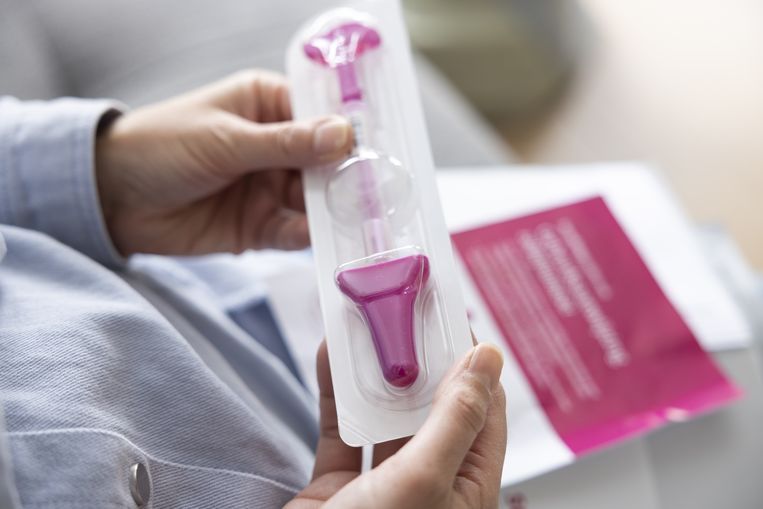With the self-sampling kit, women can take vaginal material themselves that the laboratory tests for the human papilloma virus that can cause cervical cancer.Image ANP / Laurens van Putten
Why is the home test necessary?
In the Netherlands, 900 women contract cervical cancer every year, 200 of which die from the disease. Without population screening, that would be five hundred, says Sandra van Dijk, program manager at RIVM.
But the number of women taking part in the study has been declining for years. All women between 30 and 60 years old receive an invitation to participate five to seven times in their lives. At the last measurement, 55 percent of the women accepted an invitation from their GP for a smear test. In the population screening for breast cancer, that number is much higher: 72 percent.
For young women between the ages of 30 and 34, the participation rate in cervical cancer screening is even lower: 44 percent. And that while 91 percent of them say they have the intention to participate. ‘But people forget or become pregnant, so they have to postpone it, and then it never happens again,’ says Van Dijk. ‘This home test should lower the participation threshold.’
Over by author
Michiel van der Geest is the care reporter for de Volkskrant and delves into all forms of care: from hospitals to general practitioners, from care for the disabled to Big Pharma, from health differences to the risk of falling.
Isn’t such a test complicated?
Every woman aged 30 who can participate in the population screening for the first time will now automatically receive a home test. All other women who receive a repeat call – varying from once every five to once every ten years, depending on previous results of the study – can choose whether they prefer to go to the GP or request a home test. If they do not respond, they will also receive a home test after twelve weeks.
It is very easy to do, according to Van Dijk. You insert a kind of cotton swab into the vagina and turn it around a number of times to remove vaginal material. You then send it to the laboratory in the enclosed reply envelope.
If researchers find the human papillomavirus (hpv) there, which can cause cervical cancer, they will be referred to their GP for a more in-depth smear test. This will apply to about 1 in 10 women. If restless cells are found, the GP will refer you to the gynaecologist.
‘The great thing about this research is that we can use it to prevent disease,’ says Van Dijk. The gynecologist often finds a precancerous stage of cancer, which the doctor can clear up with treatment or minor surgery. Of the 15,000 women who were referred to a gynecologist in 2021 after participating in the population screening, 6,000 required treatment to prevent worsening.
How many extra women will now participate in the population screening?
‘We don’t know, it will be exciting months,’ says Van Dijk. There is not much material for comparison, only Sweden has set up a comparable system to prevent cervical cancer. In an earlier pilot study, one third of the women who did not respond to the call did take the home test.
Incidentally, the intention is that the population screening will no longer be necessary in the long term, says Van Dijk. Vaccination against HPV is now part of the national vaccination program. This year, the first women eligible for the HPV vaccine will turn 30. The vaccine protects 87 percent against cervical cancer.
But the number of girls getting vaccinated is also declining, according to figures published by RIVM last week: 63.6 percent get the HPV injections.
Read also
2023-07-03 13:54:28
#Women #receive #home #test #cervical #cancer #participation #threshold

